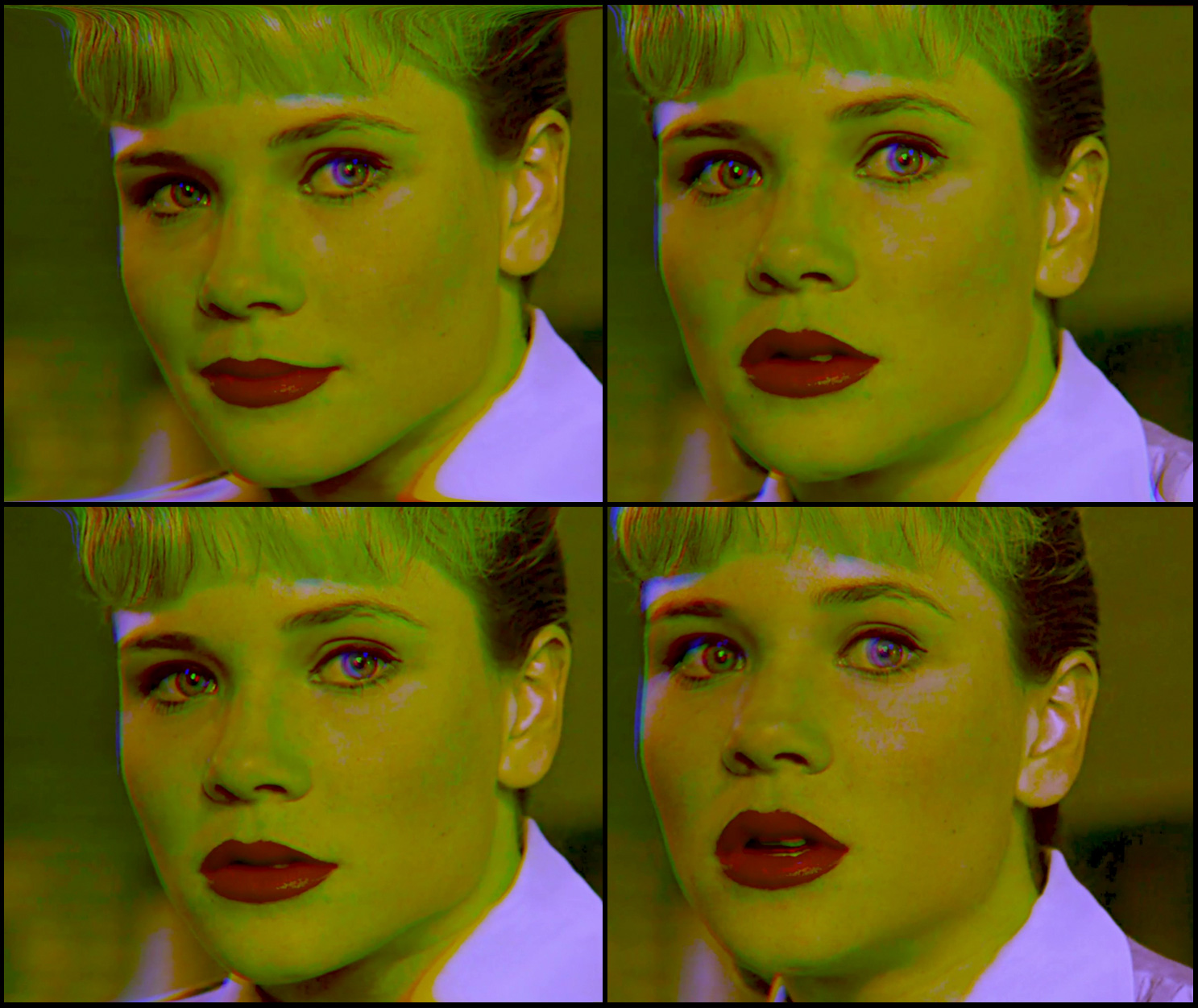
Asst. Prof. Sam Forkner

Abstract :
We can compare an actor’s face on screen in a movie to an artist’s depiction of a face in a painting or cartoon. When an actor is aware they are in a close-up, they enhance their performance with subtlety in their facial movements. The choice of lens and camera angle adds perspective to what the viewer finally sees on screen, but both actors and animators alike portray the feelings of their characters by the position of the eyes and the mouth. Visual character-driven narratives are heavily dependent upon the depiction of facial expressions as a way to engage an audience and drive storylines. There are three facial features that define an emotion in the depiction of a face:
- the position of the eyebrows relative to the eyes
- whether the eyes are wide-open, closed or in between
- the shape of the mouth
Interestingly, a viewer uses these same cues to read the expression of a face drawn in a cartoon, taken in a photograph, or by that real person right in front of you!
As early as 1920, Kuleshov had demonstrated that a viewer of a film “reads” the expression of an actor. She interprets that actor’s expression as a feeling or emotion, arbitrarily, according to her own conception. Kuleshov used a well known star of the time framed in a close-up – two unmentioned things that dramatically effect how his audience might “read” the movie, but at this time the power of the close-up had not been truly formulated. Nor had some of the ideas from montage theory, continuity editing, sound design and special effects, nevertheless, one thing he proved that the meaning wasn’t contained in the shot or the performance, but it was created in the mind of the viewer. He also showed what the audience perceived in the character could be primed with an image that preceded it. Part of his presentation was to expose the ruse so that the audience could see they had been manipulated.
Objectives :
-
demonstrate how film editors create cinematic looks with color-effects, cropping, matting, and time-effects
-
use painterly concepts of color-theory in a film montage for the creation of mood and tone
-
generate iconic moving-images in the style of artwork such as Andy Warhol’s Green Marilyn, 1962, by manipulating images of globally recognized faces
-
use discontinuity to jolt the viewer into an awareness that they are being manipulated by the imagery
-
generate interest in the viewer to see what happens next
Conceptual Framework :
Images of faces, whether drawn by an animator or put-on by an actor, can display the entire range of human emotions through the simple relationships between the eyes, eyebrows and mouth. So just as an animator will have a key-frame that they use to go from one expression to another, an actor will have a main feeling that they present until it is time for them to go on to another expression. For example, in both disciplines surprise can transition into fear by simply lowering the eyebrows – while keeping the eyes wide open. Likewise, surprise changes to joy by simply just changing the mouth.
Kuleshov made his same simple montage three times. A very well-recognized actor puts-on a deliberately neutral expression in a close-up, and then one of three cut-away shots is used: a bowl of hot soup, a dead child or a pretty woman. Kuleshov showed that the viewer’s interpretation could be quite different from what was originally expressed by the actor if that shot was isolated and cut together with something else which leads us to editing. Each of Kuleshov’s cut-aways is presented as an object of the close-up. What happens when that object is another face.
Montage theory seems to be at complete odds with the theory behind continuity editing with its reverse shots and cut-aways. Montage theory doesn’t ever specifically mention close-ups as it was developed from cutting newsreel footage together. But Eisenstein’s idea of tonal montage lets an editor use clips based on artistic properties, such as line, form, space and color. There are a lot of artistic elements in a face. What if we used only close-ups of famous actors to make a montage? Using all the animation and special effects techniques to isolate facial expressions and put them together, and let the viewer create the meaning.
Process / Methodology :
The sequence is composed of ten shots with four actors. Each shot contains a visual and an auditory element. The visual element was created by using reverse speed, slow motion, and looping effects on specific frames to generate longer clips of media which were then put through more processes: matte-work to isolate the actor’s expression, change eye-lines and remove backgrounds; color effects to create a different style, mood or storyline; sound design for emphasis or misdirection. Each finished shot is only a part of a story. It is simply a cross-section of a scene, or a moving still life painting, a tangent line that is itself still cinematic, but now completely removed from its original intent – in a fashion similar to Kuleshov’s. Since now the image of the well-known actor is iconographized, anything juxtaposed with it will create meaning but instead of cutting to a bowl of soup, the next cut is also an iconic actor in a close-up.
Techniques and Materials :
-
choosing video frames from easily accessible mainstream media that contain well-recognized people in close-ups who are displaying a specific emotional state
- isolating the expression of the actors using typical matte work and 2D animation techniques such as cropping, flipping, looping, reverse and slow motion
-
upscaling these clips by layering color effects and rendering special effects to generate digital media at higher resolution
-
creating a soundscape which highlights the emotion in a cinematic fashion
Result / Conclusion :
This project uses the methodology introduced in last years Arts and Design Symposium, and strives to advance upon the theoretical questions generated by using editing, animation and sound in a discontinuous associative montage. One of the goals of last years experiment was that the viewer’s level of self-awareness would determine the level of engagement. The more the viewer was aware of the manipulation, the more they would enjoy the work. The purpose of the use of close-ups was to have the viewer empathize with the facial expression. The emotional quality depicted in a particular clip can be manipulated to some extent to create matches in timing, spacing and rhythm causing it to line up perfectly with other shots. When shots line up, the viewer takes them as belonging together. I manipulated the eye-lines of unrelated shot to make them match, but cut them together discontinuously by changing the soundtrack or color. Since every shot is a close-up, there are no visual cues to pick up on, other than the expressions in the faces and the colors or music. What is created is an abstract narrative, where the story is generated by the viewer’s interpretation of facial cues. A viewer will empathize with the expression in a moving image of a face much the same way as they would with a person in real life.
References :
Barsam, R. M. (1973). Nonfiction film, a critical history. Indiana University Press.
Cage, Nicolas (Actor). (2018) Mandy [Film]. RLJE films, XYZ FILMS.
Cage, Nicolas (Actor). (2023) Sympathy for the Devil [Film]. Capstone Pictures, Saturn Films.
De Armas, Ana (Actress). (2022) Blonde [Film]. Plan B Entertainment.
Eisenstein, S. M. (1937-40). Selected Works Vol. 2: Towards a Theory of Montage. British Film Institute.
Kuleshov, Lev (Director). (1920) The Kuleshov Effect [Film].
Leyda, Jay. (1983). Kino, a history of the Russian and Soviet film. London: George Allen and Unwin Ltd. Lee, S.
Locane, Amy (Actress). (1990) Cry-Baby [Film]. John Waters.
Try not to Laugh at the Cutest and funniest Baby Videos [Film]. Little Ones: YouTube channel. Retrieved 4 March 2024.